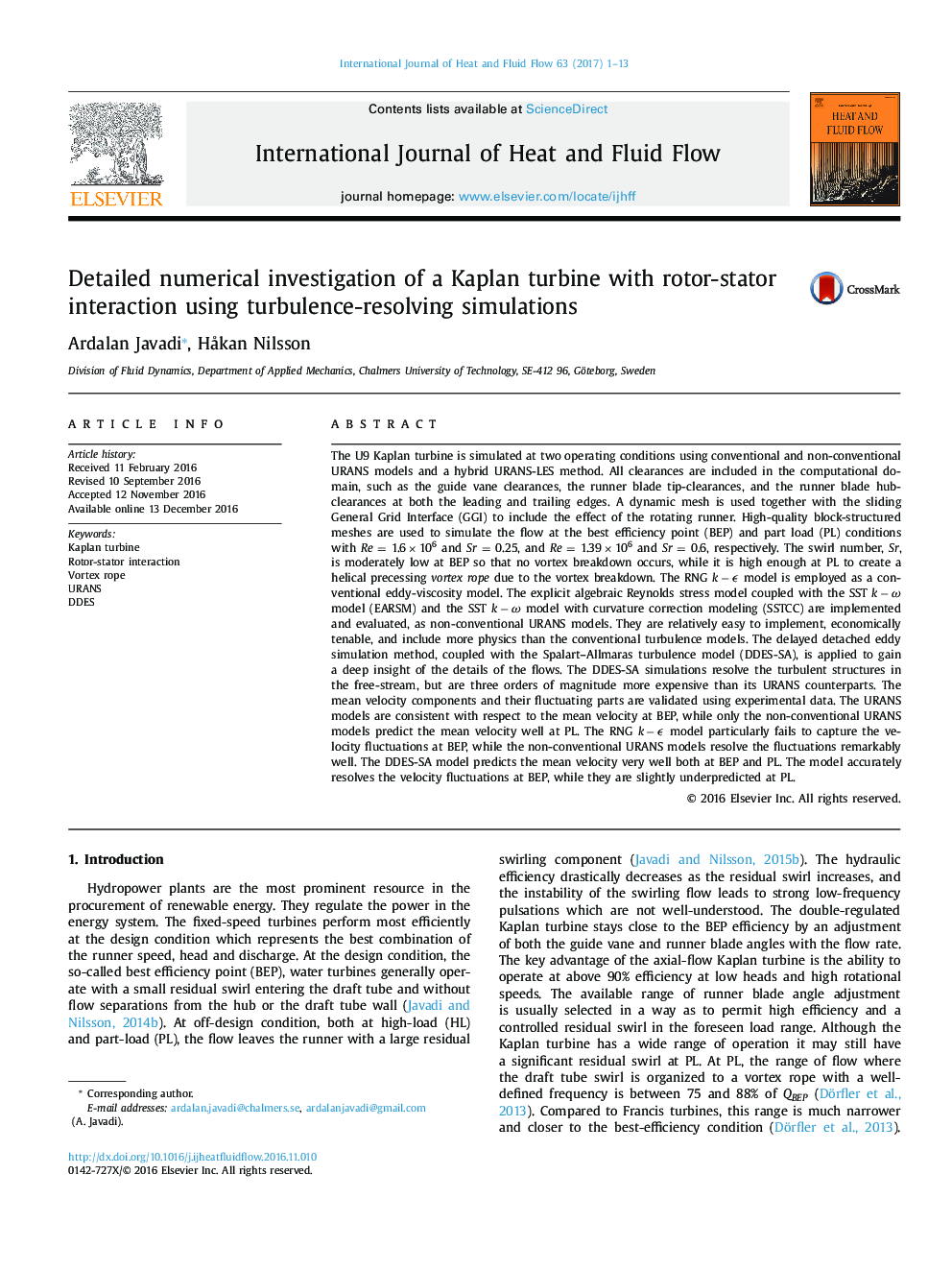| کد مقاله | کد نشریه | سال انتشار | مقاله انگلیسی | نسخه تمام متن |
|---|---|---|---|---|
| 4993308 | 1457616 | 2017 | 13 صفحه PDF | دانلود رایگان |
The U9 Kaplan turbine is simulated at two operating conditions using conventional and non-conventional URANS models and a hybrid URANS-LES method. All clearances are included in the computational domain, such as the guide vane clearances, the runner blade tip-clearances, and the runner blade hub-clearances at both the leading and trailing edges. A dynamic mesh is used together with the sliding General Grid Interface (GGI) to include the effect of the rotating runner. High-quality block-structured meshes are used to simulate the flow at the best efficiency point (BEP) and part load (PL) conditions with Re = 1.6âÃâ106 and Sr = 0.25, and Re = 1.39âÃâ106 and Sr = 0.6, respectively. The swirl number, Sr, is moderately low at BEP so that no vortex breakdown occurs, while it is high enough at PL to create a helical precessing vortex rope due to the vortex breakdown. The RNG kâϵ model is employed as a conventional eddy-viscosity model. The explicit algebraic Reynolds stress model coupled with the SST kâÏ model (EARSM) and the SST kâÏ model with curvature correction modeling (SSTCC) are implemented and evaluated, as non-conventional URANS models. They are relatively easy to implement, economically tenable, and include more physics than the conventional turbulence models. The delayed detached eddy simulation method, coupled with the Spalart-Allmaras turbulence model (DDES-SA), is applied to gain a deep insight of the details of the flows. The DDES-SA simulations resolve the turbulent structures in the free-stream, but are three orders of magnitude more expensive than its URANS counterparts. The mean velocity components and their fluctuating parts are validated using experimental data. The URANS models are consistent with respect to the mean velocity at BEP, while only the non-conventional URANS models predict the mean velocity well at PL. The RNG kâϵ model particularly fails to capture the velocity fluctuations at BEP, while the non-conventional URANS models resolve the fluctuations remarkably well. The DDES-SA model predicts the mean velocity very well both at BEP and PL. The model accurately resolves the velocity fluctuations at BEP, while they are slightly underpredicted at PL.
Journal: International Journal of Heat and Fluid Flow - Volume 63, February 2017, Pages 1-13
